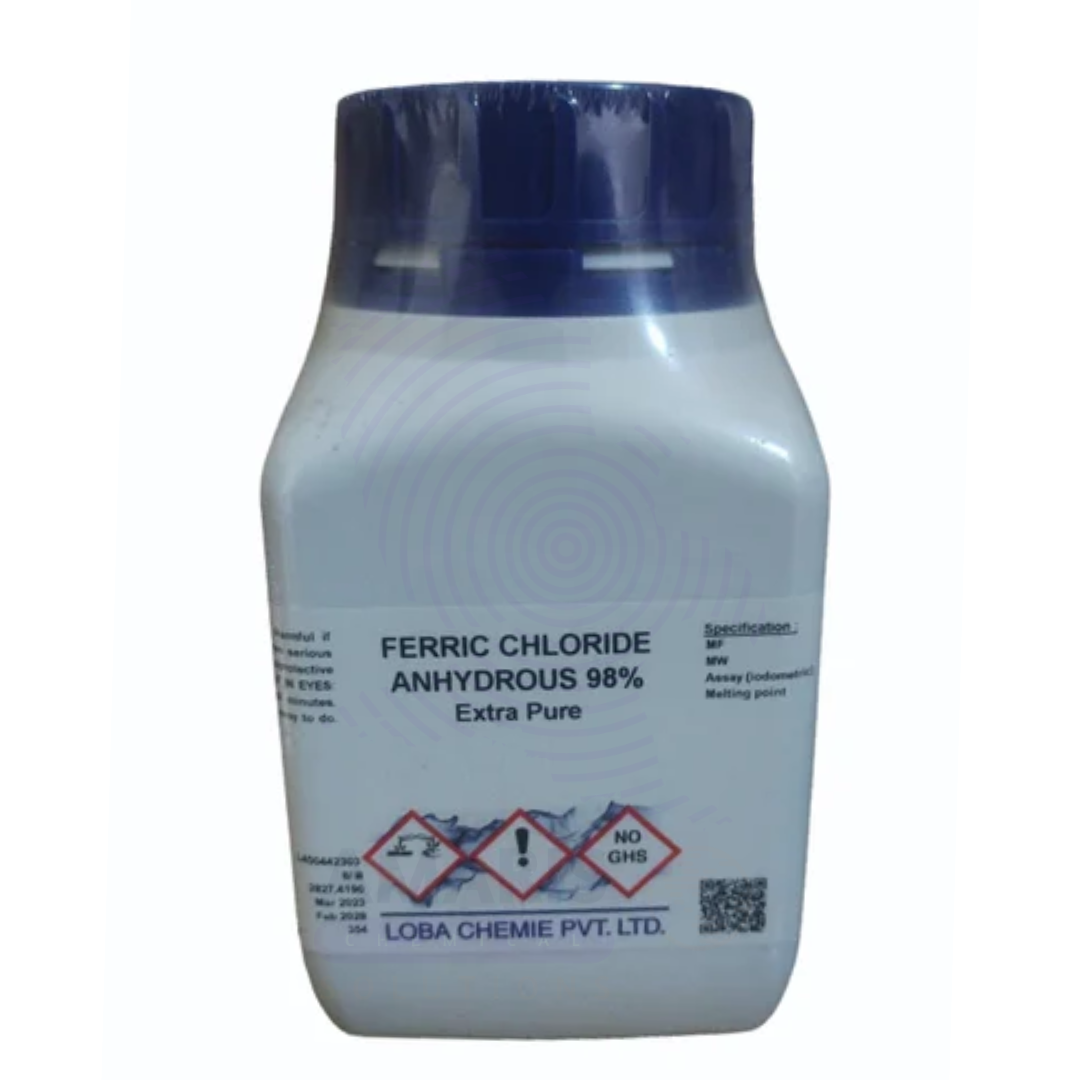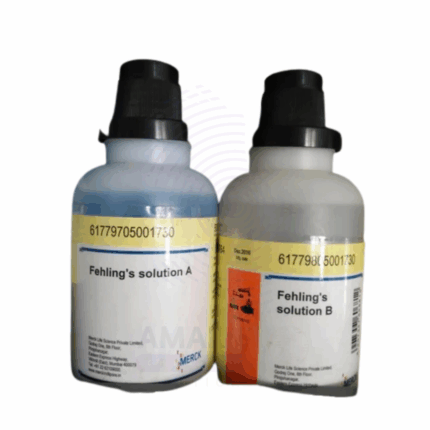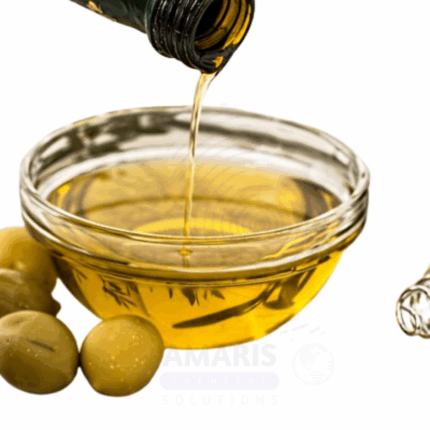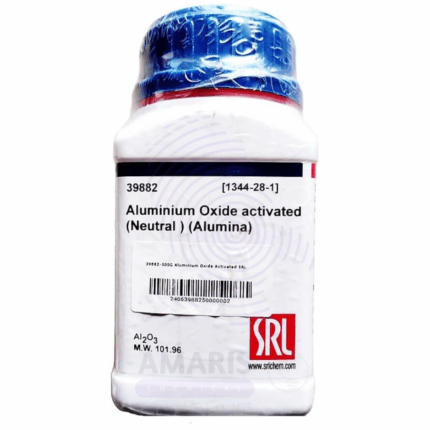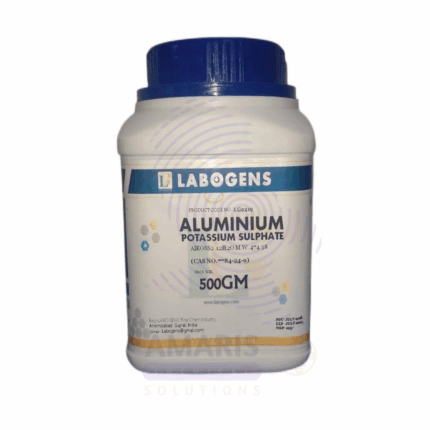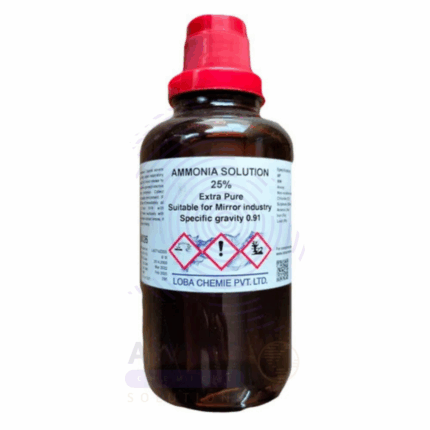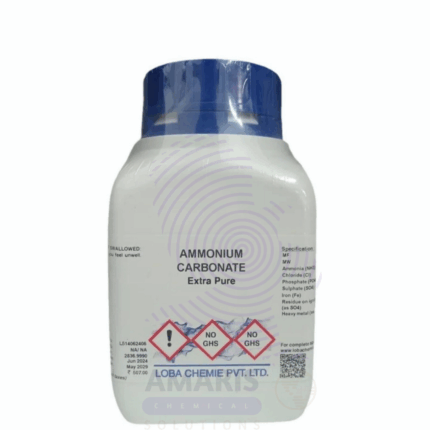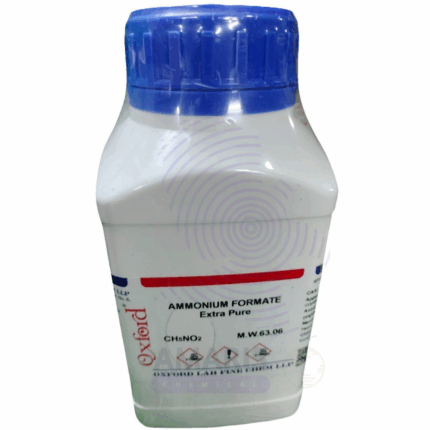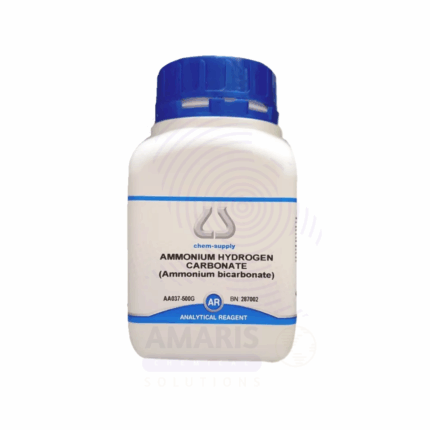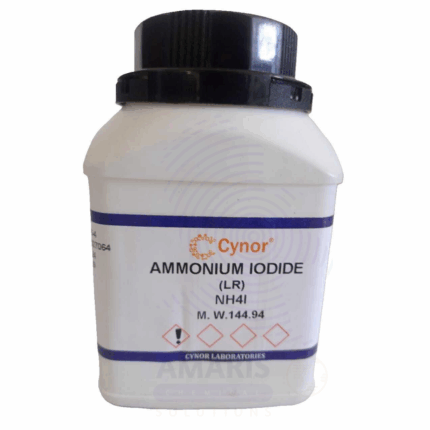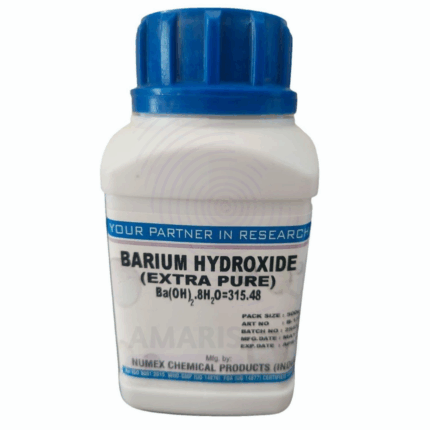Ferric Chloride Anhydrous Extra Pure
$ 17.20
Ferric Chloride Anhydrous Extra Pure is a highly refined, moisture-free compound composed of iron and chlorine (FeCl₃). In laboratory settings, it is widely used as a reagent for detecting phenols and as an etching agent for metals, especially in printed circuit board (PCB) production. Its strong oxidizing properties also make it suitable for redox reactions, qualitative analysis, and inorganic synthesis. This extra pure grade ensures minimal impurities, making it ideal for precise and controlled chemical experiments.
Ferric Chloride Anhydrous Extra Pure
Primary Uses
- Etching agent for metals (especially copper):
Widely used in PCB (printed circuit board) fabrication and metallography to etch copper and other metals. - Precipitating agent in chemical analysis:
Reacts with various anions (e.g., phosphate, carbonate) to form characteristic precipitates, aiding in qualitative analysis. - Test for phenols (Ferric Chloride test):
Produces a violet, green, or blue color when reacted with phenol compounds, useful in organic compound identification. - Catalyst in organic synthesis:
Acts as a Lewis acid catalyst in reactions such as chlorination of aromatic compounds and Friedel–Crafts reactions.
Secondary Uses
- Coagulant in water treatment simulations:
Demonstrates coagulation and flocculation processes in environmental science labs. - Oxidizing agent in redox experiments:
Instructive in redox titrations or demonstrations involving electron transfer. - Preparation of iron complexes in coordination chemistry:
Used in synthesis of iron-based coordination compounds for educational or research purposes. - Pigment formation studies:
Useful in reactions forming iron-based pigments (e.g., Prussian blue).
| PACK SIZE |
500 grams Plastic Tin |
|---|
1. Basic Identification Attributes
- Chemical Name: Ferric Chloride Anhydrous
- Synonyms: Iron(III) chloride, Iron trichloride
- Chemical Formula: FeCl₃
- Molecular Weight: 162.2 g/mol
- Grade: Extra Pure (Laboratory Reagent Grade)
- Appearance: Dark brown to black crystalline solid with pungent odor
2. Physical & Chemical Properties
- Melting Point: ~306 °C
- Boiling Point: ~316 °C (sublimes)
- Solubility: Reacts violently with water, forming hydrochloric acid and ferric hydroxide
- Hygroscopic: Yes
- Odor: Sharp, acrid
3. Safety & Hazard Attributes
- GHS Classification:
- Corrosive to skin and eyes (Category 1)
- Acute toxicity (Oral, Category 4)
- Environmental hazard (Aquatic Chronic, Category 2)
- Hazard Statements:
- H302: Harmful if swallowed
- H314: Causes severe skin burns and eye damage
- H411: Toxic to aquatic life with long lasting effects
- PPE Requirements:
- Chemical-resistant gloves (nitrile)
- Goggles or face shield
- Lab coat
- Use in fume hood or well-ventilated area
- First Aid Measures:
- Inhalation: Move to fresh air; seek medical help
- Skin Contact: Rinse with water for 15 minutes
- Eye Contact: Flush with water immediately, get medical attention
- Ingestion: Do not induce vomiting; rinse mouth and seek medical attention
4. Storage & Handling Attributes
- Storage Conditions:
- Store in tightly sealed, non-metallic container
- Keep in cool, dry area away from moisture
- Avoid contact with metals and reducing agents
- Handling Notes:
- Handle in dry atmosphere (moisture-sensitive)
- Do not allow contact with skin or eyes
- Avoid generating dust
5. Regulatory & Compliance Attributes
- CAS Number: 7705-08-0
- EC Number: 231-729-4
- UN Number: UN 1773
- Hazard Class: 8 (Corrosive substances)
- Packaging Group: III
6. Laboratory Applications
- Primary Uses:
- Etching agent for metals (especially copper in PCB manufacturing)
- Precipitating agent in water and wastewater treatment
- Catalyst in organic synthesis
- Chlorination and oxidation reactions
- Secondary Uses:
- Laboratory testing of phenols and other aromatic compounds
- Preparation of ferric salts
- Educational demonstrations of hygroscopic and exothermic reactions
SAFETY PRECAUTIONS
- Corrosive – can cause severe skin and eye burns
- Releases HCl fumes upon contact with moisture
- Use gloves, eye protection, and lab coat
- Work in a well-ventilated area or fume hood
Storage:
- Store in tightly sealed containers in a cool, dry place
- Protect from moisture and humidity
FIRST AID MEASURES
- Inhalation: Move to fresh air, seek medical help if breathing is difficult
- Skin/Eye Contact: Flush immediately with water for at least 15 minutes; remove contaminated clothing
- Ingestion: Rinse mouth, do not induce vomiting—seek immediate medical attention
Related products
Aluminium Oxide Active Neutral Extra Pure
Aluminium Potassium Sulphate Hydrated Extra Pure
Ammonia Solution Extra Pure
Ammonium Carbonate Extra Pure
Ammonium Carbonate Extra Pure is a high-quality, white crystalline solid widely used across various scientific, industrial, and food-related applications. Manufactured to stringent purity standards, this compound is ideal for laboratories and processes that demand high-grade reagents. With its characteristic ammonia-like odor and ability to decompose upon heating, ammonium carbonate plays a versatile role in both chemical reactions and physical processes.
In aqueous solution, ammonium carbonate breaks down into ammonium bicarbonate and ammonium carbamate, further releasing ammonia (NH₃) and carbon dioxide (CO₂) upon heating. This property makes it especially useful in applications that require controlled gas release or temporary pH modification.


 Preservatives(food)
Preservatives(food) Flavor Enhancers
Flavor Enhancers Acidulants
Acidulants Sweeteners
Sweeteners Antioxidants
Antioxidants Colorants(food)
Colorants(food) Nutraceutical Ingredients (food)
Nutraceutical Ingredients (food) Nutrient Supplements
Nutrient Supplements Emulsifiers
Emulsifiers
 Collectors
Collectors Dust Suppressants
Dust Suppressants Explosives and Blasting Agents
Explosives and Blasting Agents Flocculants and Coagulants
Flocculants and Coagulants Frothers
Frothers Leaching Agents
Leaching Agents pH Modifiers
pH Modifiers Precious Metal Extraction Agents
Precious Metal Extraction Agents
 Antioxidants(plastic)
Antioxidants(plastic) Colorants (Pigments, Dyes)
Colorants (Pigments, Dyes) Fillers and Reinforcements
Fillers and Reinforcements Flame Retardants
Flame Retardants Monomers
Monomers Plasticizers
Plasticizers Polymerization Initiators
Polymerization Initiators Stabilizers (UV, Heat)
Stabilizers (UV, Heat)
 Antifoaming Agents
Antifoaming Agents Chelating Agents
Chelating Agents Coagulants and Flocculants
Coagulants and Flocculants Corrosion Inhibitors
Corrosion Inhibitors Disinfectants and Biocides
Disinfectants and Biocides Oxidizing Agents
Oxidizing Agents pH Adjusters
pH Adjusters Scale Inhibitors( water)
Scale Inhibitors( water)
 Antioxidants(cosmetic)
Antioxidants(cosmetic) Emollients
Emollients Fragrances and Essential Oils
Fragrances and Essential Oils Humectants
Humectants Preservatives
Preservatives Surfactants(cosmetic)
Surfactants(cosmetic) Thickeners
Thickeners UV Filters
UV Filters
 Fertilizers
Fertilizers Soil Conditioners
Soil Conditioners Plant Growth Regulators
Plant Growth Regulators Animal Feed Additives
Animal Feed Additives Biostimulants
Biostimulants Pesticides (Herbicides, Insecticides, Fungicides)
Pesticides (Herbicides, Insecticides, Fungicides)
 Active Pharmaceutical Ingredients (APIs)
Active Pharmaceutical Ingredients (APIs) Excipients
Excipients Solvents(pharmaceutical)
Solvents(pharmaceutical) Antibiotics
Antibiotics Antiseptics and Disinfectants
Antiseptics and Disinfectants Vaccine Adjuvants
Vaccine Adjuvants Nutraceutical Ingredients (pharmaceutical)
Nutraceutical Ingredients (pharmaceutical) Analgesics & Antipyretics
Analgesics & Antipyretics
 Analytical Reagents
Analytical Reagents Solvents(lab)
Solvents(lab) Chromatography Chemicals
Chromatography Chemicals Spectroscopy Reagents
Spectroscopy Reagents microbiology-and-cell-culture-reagents
microbiology-and-cell-culture-reagents Molecular Biology Reagents
Molecular Biology Reagents Biochemical Reagents
Biochemical Reagents Inorganic and Organic Standards
Inorganic and Organic Standards Laboratory Safety Chemicals
Laboratory Safety Chemicals Specialty Laboratory Chemicals(Special Laboratory Equipment)
Specialty Laboratory Chemicals(Special Laboratory Equipment)
 Demulsifiers
Demulsifiers Hydraulic Fracturing Fluids
Hydraulic Fracturing Fluids Scale Inhibitors(oil)
Scale Inhibitors(oil) Surfactants(oil)
Surfactants(oil) Drilling Fluids
Drilling Fluids
 Dyes and Pigments
Dyes and Pigments Bleaching Agents
Bleaching Agents Softening Agents
Softening Agents Finishing Agents
Finishing Agents Antistatic Agents
Antistatic Agents
 Admixtures
Admixtures Waterproofing Agents
Waterproofing Agents Sealants and Adhesives
Sealants and Adhesives Curing Compounds
Curing Compounds Concrete Repair Chemicals
Concrete Repair Chemicals Anti-Corrosion Coatings
Anti-Corrosion Coatings
 Surfactants(cleaning)
Surfactants(cleaning) Builders
Builders Enzymes
Enzymes Solvents (Cleaning)
Solvents (Cleaning) Fragrances
Fragrances
 Electronic Chemicals
Electronic Chemicals Catalysts
Catalysts Lubricants
Lubricants Photographic Chemicals
Photographic Chemicals Refrigerants
Refrigerants Automotive chemicals
Automotive chemicals Pyrotechnic Chemicals
Pyrotechnic Chemicals
 Biodegradable Surfactants
Biodegradable Surfactants Bio-based Solvents
Bio-based Solvents Renewable Polymers
Renewable Polymers Carbon Capture Chemicals
Carbon Capture Chemicals Wastewater Treatment Chemicals
Wastewater Treatment Chemicals
 Pigments
Pigments Solvents(paint)
Solvents(paint) Specialty Coatings
Specialty Coatings Binders/Resins
Binders/Resins Additives
Additives Driers
Driers Anti-Corrosion Agents
Anti-Corrosion Agents Functional Coatings
Functional Coatings Application-Specific Coatings
Application-Specific Coatings
 Fresh Herbs
Fresh Herbs Ground Spices
Ground Spices Whole Spices
Whole Spices Spice Blends
Spice Blends Dried Herbs
Dried Herbs
 Leavening Agents
Leavening Agents Dough Conditioners
Dough Conditioners Flour Treatments
Flour Treatments Fat Replacers
Fat Replacers Decoratives
Decoratives Preservatives(baking)
Preservatives(baking)
 Plasticizers & Softeners
Plasticizers & Softeners Reinforcing Agents
Reinforcing Agents Adhesion Promoters
Adhesion Promoters Vulcanizing Agents
Vulcanizing Agents Antidegradants
Antidegradants Blowing Agents
Blowing Agents Fillers & Extenders
Fillers & Extenders Accelerators & Retarders
Accelerators & Retarders